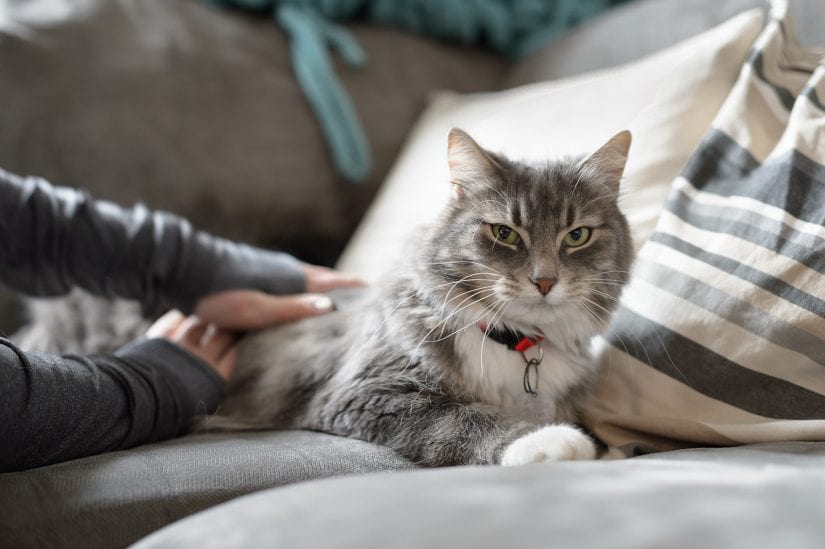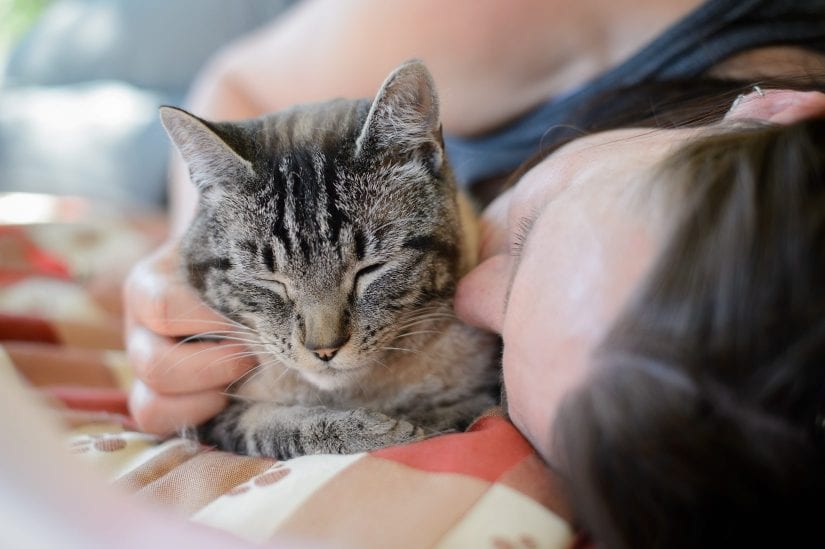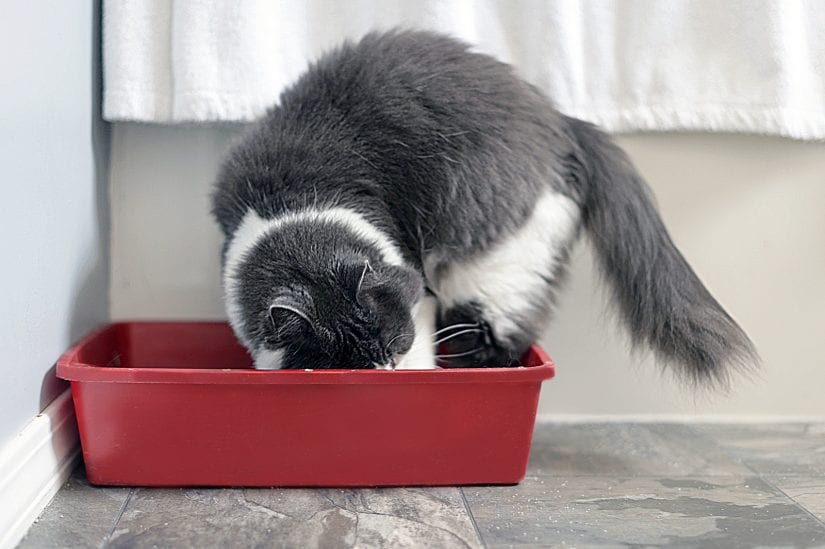Thinking of getting a second cat? Below are some tips for introducing your new cat to your resident cat (PDF).
Go slow with cats!
When bringing a new cat home to meet your resident cat, it’s never a good idea to just throw them into a room together. That can be scary for both of them! Go slow and introduce them. For both animals this can be a stressful time. A gradual introduction process is important for them to build a friendship. If one cat gets hissed at or swatted, she may always be afraid of the other cat.

Step 1.) Before you take your new cat home
- Set aside one room for your new cat away from the resident cat’s favourite place.
- Have at least one comfortable sleeping area, one hiding area such as her carrier box, crate or a “tent bed”, a litter box, a water bowl and a food bowl.
- Plug-in a Feliway® diffuser. You can get one at your veterinarian office. It reproduces cat facial pheromones that are pacifying to cats. It will help lower their stress. It’s a good idea to have a diffuser in the new cat room and somewhere in the house where the resident cat spends time.
Step 2.) Bringing your new cat home
- Cats feel safe when surrounded by their own scent. Place towel or bedding she has been sleeping on in the carrier box so that she has familiar scent during the trip.
- Once home, take your cat to her room right away. Do not come into contact with the resident cat.
- Keep her inside the carrier box until you are in her room with the door shut.
- Place her box or other hiding area in a corner of the room (away from the litter box) and place the carrier box beside it. Open the door.
- Do not force her to come out. She may be scared and stressed by the new environment.
- Leave her alone in the room. Allow her to settle down and come out on her own.
Step 3.) Later that day swap cats scent
Cats communicate visually but also by scent. So you must start by introducing the cats to each other by “swapping “scent.
- Place your new cat’s towel on or near your resident cat’s favourite place and encourage him to approach
- If your cat starts to hiss, spit or avoid the towel place it on the floor away from his bed or food bowl. Each day move the towel closer to the cat’s food bowl.
- Do the same thing with your resident cat’s bedding giving it to the new cat for her to smell.
- Swap food bowls between the cats. They will start to associate the positive act of eating with the scent of the other cat. If one of the cats is sick or on a special diet, ask your vet before trying this.
- Once they are completely tolerant of each others scent proceed to visual contact.
How long will it take for cats to like each others scent?
This can vary from a few hours (usually when one is a kitten or both are social cats) to a few months.
Important tip when introducing cats
Set aside special play and petting time each day. You want to have one on one time with each cat when your introduction is taking longer.

Step 4.) Controlled cat meetings
First – Visual contact between cats
- Separate physically with screen door or baby gate. If not possible then open new cat’s door slightly so cats can see each other but cannot fit through door.
- Give cats treats so they spend time close to each other or play with a feather to encourage play. Do not use catnip.
- When comfortable with each other they will sniff noses, play through the door or rub against the door. When you see this, you can have a proper introduction. There should be no growling, or repeated spitting or hissing.
What if my cats are showing aggression towards each other?
Is the aggression more severe than a hiss or a quick swat? Make the opening smaller and over the next few days, feed the cats closer and closer to the door.
Second – No barrier between cats
- Open the door and let them explore.
- If they fight, interrupt them by clapping your hands or with another noise that doesn’t scare them.
- Don’t pick them up or force them to interact.
- Let them distance themselves from each other if that’s what they want.
Do they each need their own litter box?
Give each cat his or her own litter box and add an extra one. They should have their own bowls, beds and hiding places unless they choose to share.

Expectations
Introductions, when done properly, can take more time than expected. Introductions and building a relationship for some cats may take a few hours or up to a few months. Your cats may play and groom each other or just sit and watch each other. Don’t force them to be what you think best buddies act like.
Caution when introducing cats
Watch for bullying, sometimes one cat will not let the other one through a door, or have access to the food bowl. You may see them swatting or hissing when the other cat tries to go to the food bowl. Watch for signs one cat is avoiding areas. If you think she’s being bullied make sure she has her own space and things like bed, litter box, food bowl.
Never punish either cat if they show aggression. If you see, signs of aggression go back a few steps. Scent swap for a few days and start visual contact slowly again.
When to contact your vet about introducing cats?
- Prolonged fighting
- Injuries from fighting
- One cat stops eating
- One cat stops using the litter box
- One starts spraying
- One of your cats hides all the time
Adapted from cat behaviour research by Dr. Rachel Casey, Anthrozoology Institute, UK

